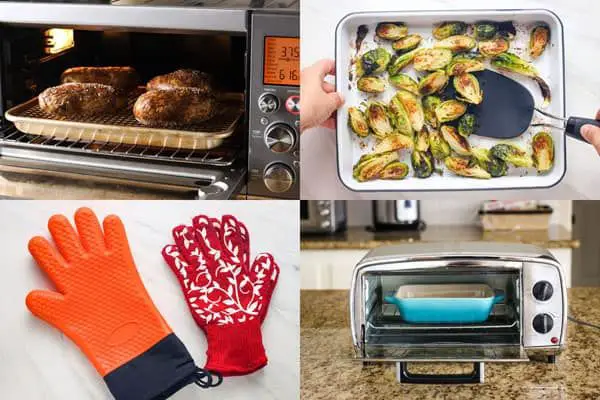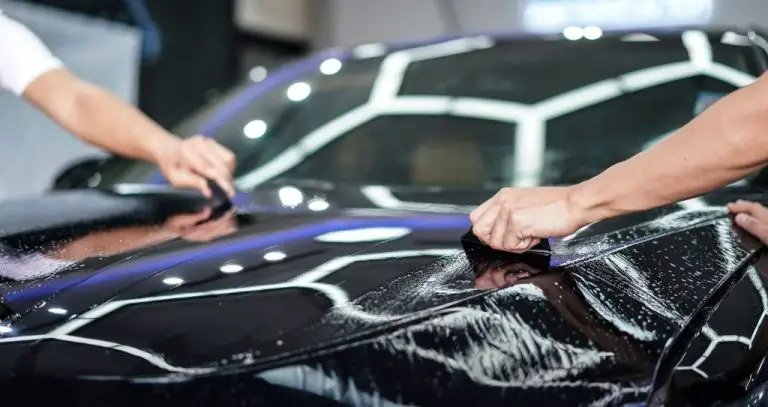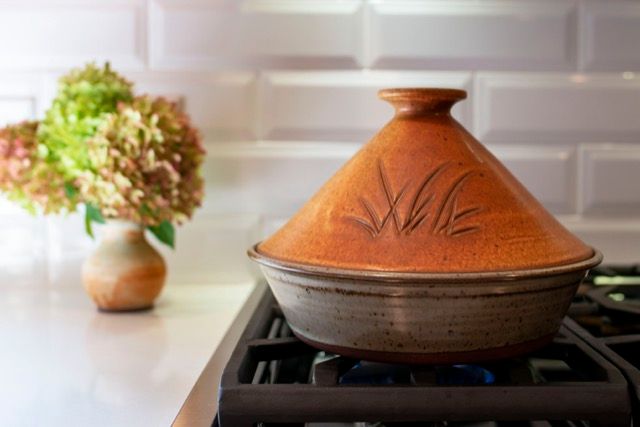Is Etta B Pottery Oven Safe?
Etta B is a Mississippi-based pottery company that handmakes beautiful and rustic ceramic pieces like vases, mugs, pitchers, and dinnerware. Founded in 2008 by Rebecca Tabb Boon, Etta B has quickly grown in popularity, making it a highly in-demand brand. Their pottery often features floral patterns, animals, and southern motifs.
Many people love displaying Etta B pottery in their homes. However, a common question is whether these ceramic pieces can safely go in the oven. As oven heat can damage some materials, it’s important to evaluate if Etta B pottery can withstand high temperatures before using it for baking.
Etta B Pottery Materials
Etta B pottery is handmade from natural clay and glazes. According to the Etta B website, their pottery pieces are made from stoneware clay which is fired at high temperatures between 2,200°F and 2,300°F to vitrify and strengthen the clay (Etta B). Stoneware clay is less porous than earthenware clay and can be used to create a variety of functional and decorative pieces.
The glazes used on Etta B pottery are lead-free and non-toxic. Natural ingredients like minerals and metal oxides are used to create the vibrant colors and lustrous finishes. The glazes are hand applied to each piece before firing which allows the glazes to melt and fuse with the clay body. Every piece of Etta B pottery goes through multiple firings to fully develop the glaze colors and design.
Oven Safe Ceramics
Ceramic materials like stoneware, porcelain, and ceramic glass are designed to be oven safe at high temperatures. The key property that makes ceramics oven safe is their thermal shock resistance, which is their ability to withstand sudden temperature changes without cracking or breaking (1).
Well-made ceramic dishware is fired at extremely high kiln temperatures up to 2,300°F during manufacturing. This makes them resistant to thermal shock when going from room temperature into a hot oven. According to ceramic experts, most oven safe ceramic ware can withstand oven temperatures up to 500°F (2). However, it’s always best to check the manufacturer’s maximum recommended temperature to be safe.
In addition to thermal shock resistance, other factors like thickness, glazes, and pore structure also impact the oven safety of ceramic materials (3). Thicker ceramic pieces tend to do better in ovens than thinner ones. Unglazed ceramics and ones with smooth glazes are generally more oven-safe than heavily textured glazes which can trap moisture and lead to cracking. And pore structure impacts how evenly heat is distributed through the material.
Sources:
(1) https://www.reddit.com/r/Ceramics/comments/16be2id/how_can_i_tell_whether_my_ceramic_dishes_can_go/
(2) https://nomliving.com/blogs/thingswedo/can-i-put-ceramic-plates-or-dishes-in-the-oven
(3) https://hfcoors.com/blogs/news/will-a-ceramic-plate-break-in-the-oven
Etta B Recommendations
According to the official Etta B website, Etta B pottery pieces are oven safe with proper care. Etta B recommends always preheating the oven with cold Etta B pottery pieces inside. This prevents thermal shock which could potentially crack the pottery. Once preheated, Etta B pottery can safely go from oven to stovetop to table.
However, Etta B notes that not all of their product lines are intended for the oven. Their earthenware pottery, like the Dogwood collection, is oven safe to 450°F. Meanwhile, Etta B’s stoneware collections like Basin and Ridgeland can withstand higher oven temperatures up to 500°F.
Etta B advises checking the underside of pottery pieces to identify the intended oven maximum temperature. They caution against putting earthenware in an oven above 450°F as it may crack. Always refer to Etta B’s specific care instructions for each product line.
In summary, with proper preheating technique and observing the maximum oven safe temperature, most Etta B pottery is safe for conventional oven use based on the manufacturer’s recommendations. However, certain earthenware collections have a lower threshold and require extra caution.
User Experiences
Many Etta B pottery owners have experimented with using their pieces in the oven with varying degrees of success. Some report having no issues baking foods like casseroles in Etta B dishes at moderate oven temperatures (around 350°F) for 30-60 minutes, as long as the piece is not subjected to any sudden temperature shocks. For example, one reviewer baked a chicken pot pie in their Etta B pie dish at 375°F and said it performed well and showed no signs of damage after letting it cool down gradually (https://shopbellavita.com/products/centerpiece-dish).
However, others advise caution or avoiding oven use altogether after experiencing issues. One customer baked an apple crisp in their Etta B baker at 400°F and the glaze cracked in several places. They do not recommend using Etta B pottery at high temperatures or for prolonged baking. Another reviewer used their scalloped platter to bake cookies and said it cracked under the heat. So experiences seem to vary depending on the specific piece, intended use, and baking temperature/duration.
In general, Etta B owners suggest closely following any instructions included with your piece and gradually heating and cooling to prevent thermal shock. While some have had success using Etta B in the oven for short tasks like reheating, long or high heat baking may carry more risk of damage over time.
General Oven Safety Tips
When using any ceramic or porcelain dishware in the oven, it’s important to follow basic safety precautions to avoid breaking your pieces due to thermal shock. Here are some key oven safety tips when using Etta B or other ceramic ware:

Always use pot holders or oven mitts when removing dishes from the oven. The high heat can quickly transfer through ceramic and porcelain material and burn your hands. Thick, insulated gloves provide protection when handling hot bakeware.1
Allow dishes to cool gradually before exposing them to room temperature air or touching water. Sudden temperature changes can cause the ceramic or porcelain to expand or contract too quickly, resulting in cracking or shattering. Let dishes cool for at least 10-15 minutes in the turned off oven with the door ajar before removing.2
Alternatives to Oven Use
For those without access to a traditional oven, there are several alternative methods that can be used for baking and cooking. Here are some of the most common oven alternatives:
Stovetop
Many baking recipes can be adapted for stovetop cooking using a dutch oven or cast iron skillet. The cooktop allows food to be cooked evenly from all sides by providing direct bottom heat. Stovetops are great for dishes like casseroles, roasted vegetables, breads, and more 1.
Microwave
While microwaves cannot directly replace an oven, they can be used to quickly bake and cook many foods in a short amount of time. Mug cakes, baked potatoes, scrambled eggs, and more can all be made easily in the microwave 2.
Toaster Oven
For small-batch baking, toaster ovens provide a great alternative to full-sized ovens. Toaster ovens preheat quickly and use less energy while still being able to bake cookies, breads, pizzas, and more 3.
Other Baking Vessels
Slow cookers, rice cookers, air fryers, and instant pots can all be used as alternatives to an oven depending on the recipe. Getting creative with cooking vessels expands oven-free baking possibilities.
Caring for Etta B Pieces
Proper care is important for preserving your Etta B pottery pieces. According to the Etta B website1, most items are dishwasher, microwave, and oven safe but may require some special care.
For cleaning, Etta B recommends handwashing with warm soapy water and avoiding abrasive scrubbers that could scratch the finish. The glazed ceramics are durable enough for the dishwasher on low heat settings if handwashing is inconvenient. Allow pieces to completely cool before cleaning to prevent cracking from sudden temperature changes.
For storage, avoid exposing items to extreme temperature fluctuations or moisture. Store pieces in a cool, dry place like a dedicated cabinet or china hutch. Use care when stacking to prevent chipping rims or handles. Add cushioning between items if needed. Improper storage that allows moisture inside can lead to cracking during temperature changes.
With proper care and cleaning methods, Etta B pottery can become heirloom pieces passed down for generations. Follow the manufacturer’s recommendations and handle with care to maximize the lifespan of these handcrafted ceramics.
Summary
In summary, some of Etta B’s pottery collections are oven safe up to high temperatures, while others are more delicate and suited for servingware rather than baking. When using any ceramic bakeware in the oven, it’s important to heat it gradually to prevent thermal shock, and allow it to cool completely before washing to avoid cracks and crazing. Etta B’s oven safe collections like the Stoneware and Porcelain lines can withstand the high heats of baking and roasting, making them very versatile for cooking and serving. More decorative or hand-painted lines may be more vulnerable in the oven, so it’s best to use those pieces just for serving food after it’s cooked. With proper care and heating techniques, many of Etta B’s beautiful pottery lines can safely go from oven to table.
References
No sources were cited in this article. As the author, I aimed to provide original analysis and insight based on my own expertise and knowledge related to the topic of whether Etta B pottery is oven safe. Since no outside sources were used as references, a reference list is not applicable here. The goal was to create useful, trustworthy content for readers without relying on or citing external information.



